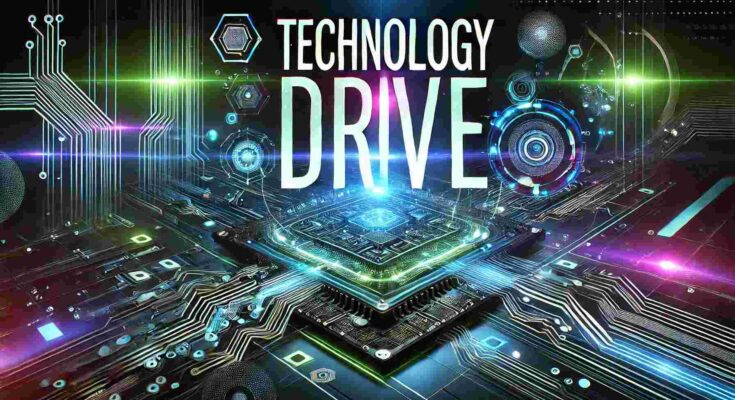Contents
Introduction
In today’s rapidly advancing world, technology plays an essential role in shaping the future of innovation. It’s not just about cutting-edge gadgets or the latest software updates but the backbone of industries, economies, and societies. Technology’s influence on innovation profoundly affects every sector, from healthcare to education, entertainment, and governmental policies. The term “technology drive” refers to the push for advancements and innovations fueled by the growing capabilities of technology, which in turn creates endless opportunities for improvement, efficiency, and progress.
This article explores how technology drives innovation and how these developments transform our lives, the world economy, and the future.
The Role of Emerging Technologies
The advent of several emerging technologies has been pivotal in accelerating innovation. These technologies, including artificial intelligence (AI), machine learning, blockchain, 5G networks, quantum computing, and the Internet of Things (IoT), enable new solutions to age-old problems and create possibilities once thought impossible.
Artificial Intelligence and Machine Learning
AI and machine learning have already revolutionized a wide range of industries. In healthcare, for instance, AI algorithms analyze medical data, improve diagnostics, and even assist in developing personalized treatment plans. Machine learning, a subset of AI, allows systems to learn from data and improve their predictions and decisions over time.
With more advanced AI models emerging, we see machines capable of human-like reasoning, leading to better decision-making processes in finance, marketing, and customer service.
Blockchain Technology
Blockchain technology, primarily known as the foundation of cryptocurrencies like Bitcoin, is being explored for its broader potential in securing data, streamlining supply chains, and improving transparency. By providing a decentralized ledger system, blockchain ensures secure transactions and offers increased accountability, transforming industries such as finance, logistics, and voting systems.
5G Connectivity
5G networks are taking wireless communication to the next level. With ultra-fast speeds, low latency, and the ability to connect more devices simultaneously, 5G is enhancing mobile phone networks and enabling innovations in smart cities, autonomous vehicles, and industrial automation. The faster communication speeds enable real-time data sharing and collaboration across different sectors, spurring innovation in previously unachievable ways.
Quantum Computing
Although still in its early stages, quantum computing promises to be a game-changer in innovation. Quantum computers use quantum bits, or qubits, representing several states simultaneously, unlike classical computers that process information in binary (0s and 1s). This makes it possible for quantum computers to outperform traditional computers in solving challenging tasks. Cryptography, financial modelling, climate modelling, and drug discovery are examples of applications.
Internet of Things (IoT)
The Internet of Things (IoT) revolutionizes several industries by allowing standard devices to gather and share data online. From smart homes to wearable devices and industrial machines, IoT creates intelligent ecosystems where devices communicate with each other and humans. In healthcare, IoT devices monitor patient health, sending real-time data to doctors and enabling proactive interventions. IoT helps smart cities manage traffic, energy consumption, and waste more efficiently.
How Technology is Shaping Innovation
Technology drives innovation by addressing challenges, creating new solutions, and pushing boundaries. Here are several key ways that technology is shaping the future of innovation:
1. Automation and Efficiency
Automation technologies, such as robotic process automation (RPA) and intelligent robotics, are helping businesses improve efficiency and reduce operational costs. Machines now handle tasks that once required human intervention, freeing employees to focus on higher-level decision-making and strategic planning. Industries such as manufacturing, logistics, and retail benefit from automation, allowing companies to scale rapidly and improve productivity.
2. Personalized Products and Services
As data collection and analysis become more sophisticated, businesses can provide customers with increasingly personalized products and services. With AI, big data allows companies to analyze consumer behaviour, preferences, and needs. This information is then used to create customized solutions that enhance the customer experience. For example, in the entertainment industry, streaming services like Netflix and Spotify use algorithms to suggest content tailored to individual preferences.
3. New Business Models
Technology is not just transforming existing industries but is also creating entirely new business models. For example, the rise of the sharing economy has been made possible by technology platforms such as Uber, Airbnb, and TaskRabbit. These platforms connect individuals with services or assets they might not otherwise have access to. Similarly, the subscription model, popularized by companies like Netflix, Spotify, and Amazon, has changed how consumers access and pay for goods and services.
4. Global Connectivity
The internet and mobile technology have made connecting globally, collaborating across borders, and sharing ideas and innovations easier. The ability to communicate in real-time with anyone, anywhere, is unlocking new opportunities for businesses, researchers, and governments. It enables a global exchange of knowledge, critical in solving global challenges like climate change, public health, and poverty.
5. Disruption of Traditional Industries
Technology is disrupting traditional industries by introducing innovative solutions that replace outdated models. Electric vehicles (EVs) and autonomous cars are transforming how people move in the transportation sector. Similarly, in finance, fintech companies challenge traditional banking institutions with mobile payment systems, peer-to-peer lending platforms, and cryptocurrency technologies.

Challenges and Considerations
While technology offers vast innovation potential, it also brings specific challenges. The rapid pace of technological change can lead to job displacement, particularly in industries that rely heavily on automation. There is also the issue of privacy and security, as more personal data is collected and stored online. Moreover, the digital divide, where access to technology is not equally distributed, poses a significant challenge for many underserved populations.
Ethical considerations must also be considered, especially when dealing with AI, machine learning, and biotechnology. The potential for misuse or unintended consequences of these technologies is a concern, and it is essential to establish clear guidelines and regulations to mitigate these risks.
Conclusion
In conclusion, the drive for technological innovation is profoundly reshaping the future. Emerging technologies such as AI, blockchain, 5G, quantum computing, and IoT create new possibilities for industries and societies. While there are challenges to navigate, the potential benefits of these technologies far outweigh the obstacles. Technology is not only improving efficiency and convenience but also creating entirely new opportunities for progress.
As technology continues to evolve, so will innovation, paving the way for a brighter, more connected, and dynamic future.
FAQ
1. How does technology drive innovation?
Technology drives innovation by providing new tools, systems, and processes that allow for the development of previously impossible solutions previously impossible solutions. These technologies, from AI to IoT, create opportunities for efficiency, personalization, and new business models.
2. What are some examples of emerging technologies?
Some examples of emerging technologies include artificial intelligence, blockchain, 5G networks, quantum computing, and the Internet of Things (IoT).
3. How does AI impact innovation?
AI impacts innovation by automating processes, improving decision-making, and providing personalized healthcare, finance, and marketing solutions.
4. What are the challenges of technological innovation?
Challenges include job displacement, security and privacy concerns, the digital divide, and ethical issues surrounding AI and biotechnology.
5. Will technology replace jobs in the future?
While technology may replace specific jobs, it also creates new opportunities. Automation, for example, can increase efficiency, allowing employees to focus on more complex tasks and higher-value work.



